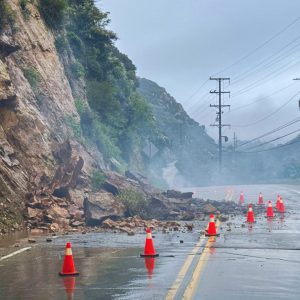 View Winners →
View Winners → The Pueblo of Desert Hot Springs


Cabot’s Pueblo Museum is a 75-yr-old, hand-built, desert hideaway in the hills of Desert Hot Springs. – Courtesy photo / CabotsmMuseum.org
By Greg Aragon
Desert Hot Springs is yet another oasis in the Palm Springs area. Set atop ancient hot and cold aquifers, the town is known for its abundant resorts and mineral spas, its world-class drinking water, secret celebrity visitors, and as I recently discovered, a few other hidden gems.
One of the most fascinating jewels I found was Cabot’s Pueblo Museum, a 75-yr-old, hand-built, desert hideaway with 35 rooms, 150 windows and 65 doors. Nestled in the scenic hills of Desert Hot Springs, the design of the pueblo was inspired by the Hopi Indians and looks like an old-west movie set.
The builder behind the rustic mansion is Cabot Yerxa, a renaissance man “who followed his heart, traveled the world and accomplished countless things.” And one of his biggest legacies is this home, which is now listed on the National Register of Historic Places. Cabot began building his masterpiece in 1941 at the tender at 57. While taking a guided tour of the property recently, I learned all about the man and how he helped found what is today Desert Hot Springs.
It all started in 1913, when at the age of 30, Cabot homesteaded about 160 acres in what is now Desert Hot Springs. At the time, the area was a dry, unforgiving land where few English-speaking people lived. According to articles Cabot wrote for a local paper at the time, he would walk 14 miles to get water from a trickling clay bank at a place called Two Bunch. In between doing this, he would search the desert for any other sources of water but would only encounter snakes and rabbits.
At one hillside location he found remnants of Native American Indians and decided that if they could survive there so could he; and it was here that he set up his camp. It was also here that thanks to an Indian friend he dug a well and discovered hot mineral waters deep below his property coming from the now famous Desert Hot Springs. And when he dug a second well nearby, he found cold water coming from the Mission Springs Aquifer. Because of these discoveries, he named his land “Miracle Hill.”
With water available, Cabot began to build his dream house – a 5,000-squar-foot residence inspired by a replica of a Southwest Indian pueblo he saw as a boy at the Chicago World’s Fair. The structure is made of anything he could find laying around the desert, including abandoned cabin pieces, used tires, tin cans, old telephone poles, buck board wagon, and more.
Much of the four-story Pueblo is made from adobe-style and sun-dried brick that Cabot made himself in his courtyard. He used a cup of cement rather than straw to make the bricks. He worked on the pueblo until his death in 1965 at the age of 81.
Today, the pueblo is still in great shape and most of the furnishings and artwork are still in place, including Cabot family artifacts collected from their adventures dating back more than 100 years. During my tour, the guide told of Cabot’s journeys to Dakota Territory, Mexico, Cuba, Alaska, France, and throughout California and the Southwest, before he helped to create the town of Desert Hot Springs. Besides an accomplished architect and writer, he was also a painter, a human rights activist for Native Americans, and was the first Post Master of the town of Sierra Madre.
Cabot’s Pueblo also boasts a 43-foot-tall “Waokiye,” or Native American wooden sculpture by artist Peter Wolf Toth, that he carved from a giant sequoia. The stature was brought to the site in 1978.
Cabot’s Pueblo Museum is located at 67616 E. Desert View Ave., Desert Hot Springs, CA 92240. Guided tours are held through May, between 9 a.m. and 4 p.m., Tuesday – Sunday. The cost is $13 for adults; $11 for seniors, active military and children ages 6 – 12. For more information, click here.








































































































